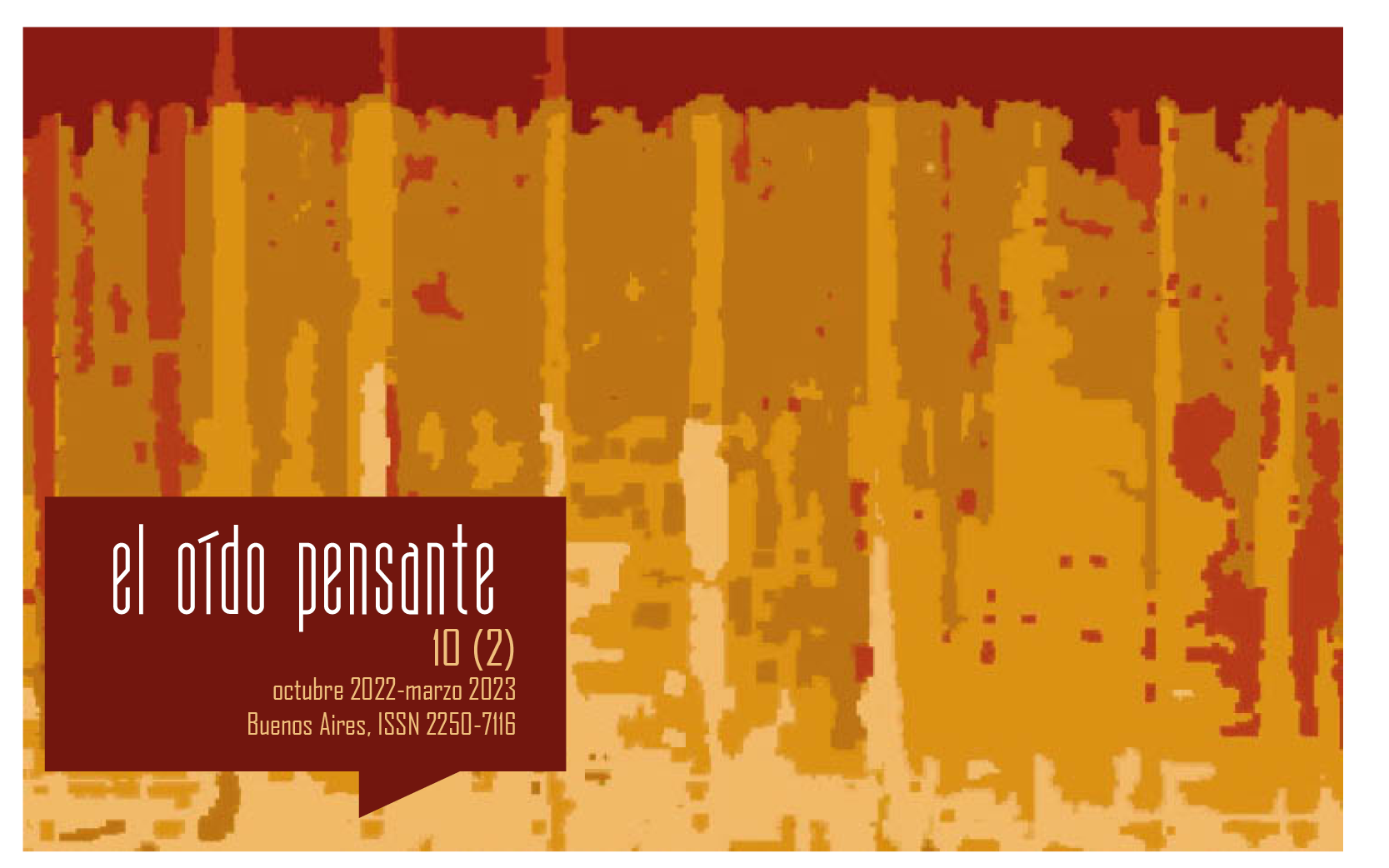The Transnational History of “Oh Lord, Why Lord”: The Blackening and Whitening of Spanish Baroque Pop
Abstract
The Pop Tops song “Oh Lord, Why Lord” (1968) is a classic of Spanish popular music of the last 60 years, and features in numerous collections released since then. This article identifies the many covers of this song made in a range of countries so far, and analyses the various changes that its lyrics and musical arrangement undergo. The majority of such covers are by musicians of African descent, attracted to the lyrics’ exploration in the first person of how it feels to be a victim of racial discrimination. These artists add to the song their own musical features, such as reggae rhythms or gospel instrumentation, an action which I label “blackening”. Conversely, the song has also been covered by a number of white artists, drawn to its attractive melody (based on Pachelbel’s Canon). These deal with its lyrical content and introduce musical elements in ways which erase or appropriate its original meaning (a phenomenon which I call ‘whitening’). In this way, Spain is located as a nexus of global musical exchange that exemplifies what Isabelle Marc calls “travelling music” and which participates in the Black Atlantic space explored by Paul Gilroy.Downloads
References
Alonso, C. (2005). El beat español: entre la frivolidad, la modernidad y la subversión. Cuadernos de Música Iberoamericana 10, 225-53. Recuperado de https://revistas.ucm.es/index.php/CMIB/article/view/61202
De Grazia, V. (2006). Irrisistible Empire: America’s Advance through Twentieth-Century Europe. Cambridge, Massachusetts: Harvard University Press.
Domínguez, S. (2002). Bienvenido Mr. Rock... Los primeros grupos hispanos 1957-1975. Madrid: Sociedad General de Autores y Editores.
Fink, R. (2010). Prisoners of Pachelbel: An Essay in Post-canonic Musicology. Hamburg Jarbuch für Musikwissenschaft 27, 89-104.
Frith, S. (1996). Performing Rites: Evaluating Popular Music. Oxford: Oxford University Press.
Frith, S. (2001). Pop Music. En S. Frith, W. Straw y J. Street (Eds.). The Cambridge Companion to Pop and Rock (pp. 91-108). Cambridge: Cambridge University Press.
Gilroy, P. (2014). Atlántico Negro: modernidad y doble conciencia, trad. J-M. Amoroto. Madrid: Ediciones Akal.
Gradischnig, H. y Maitner, H. (2015). There Goes That Song Again: Brook Benton, trad. T-M. Gattringer-Sabino y G. Groom-White. York: Music Mentor Books.
Griffiths, D. (2002). Cover Versions and the Sound of Identity in Motion. En D. Hesmondhalgh y K. Negus (Eds.). Popular Music Studies (pp. 51-64). London: Arnold.
Marc Martínez, I. (2013). Submarinos Amarillos: Transcultural Objects in Spanish Popular Music during Late Francoism. En S. Martínez y H. Fouce (Eds.). Made in Spain: Studies in Popular Music (pp. 115-24). London: Routledge.
Marc Martínez, I. (2014). Travelling Songs: On Popular Music Transfer and Translation. iaspm@journal 5(2), 3-21. doi: https://doi.org/10.5429/2079-3871(2015)v5i2.2en
Mavimbela, V. (2018). Time Is Not the Measure: A Memoir. Johannesburg: Real African Publishers.
Naro, N. P., Sansi-Roca, R. y Treece, D. (Eds.). (2007). Cultures of the Lusophone Black Atlantic. New York y Basingstoke: Palgrave Macmillan.
Needs, K. (2014). George Clinton & the Cosmic Odyssey of the P-Funk Empire. London: Omnibus Press.
Niles, L. A. (1984). Rhetorical Characteristics of Traditional Black Preaching. Journal of Black Studies, 15(1), 41-52. doi: https://doi.org/10.1177/002193478401500105
Oró, Á. (2001). La legión extranjera: foráneos en la España musical de los sesenta. Lleida: Editorial Milenio.
Otaola González, P. (2012). La música pop en la España franquista: rock, ye-ye y beat en la primera mitad de los años 60. ILCEA, 16, n.p. doi: https://doi.org/10.4000/ilcea.1421
Otaola González, P. (2014). Españolismo y señas de identidad en la música pop de los años 60. DEDiCA. Revista de Educação e Humanidades, 5, 163-77. doi: https://doi.org/10.30827/dreh.v0i5.7007
Pardo, J-R. (2005). Historia del pop español. Madrid: Rama Lama Music.
Raphael-Hernández, H. y Wiegmink, P. (Eds.). (2017). German Entanglements in Transatlantic Slavery. Atlantic Studies, 14(4).
Sosibo, K. (2019). The Onenness of Things. Mail & Guardian. Recuperado de https://mg.co.za/article/2019-04-18-00-the-oneness-of-all-things/
Stafford, A. (2001). Travel in the Black Atlantic: Dialoguing and Diverging between Aimé Césaire and Edouard Glissant. En C. Forsdick (Ed.). Travel and Exile: Postcolonial Perspectives (pp. 15-30). n.l.: Association for the Study of Caribbean and African Literature in French.
Stanley, B. (2007), Baroque and a soft place. The Guardian. Recuperado de https://www.theguardian.com/music/2007/sep/21/popandrock1
Susam-Saraeva, Ş. (2019). Interlingual Cover Versions: How Popular Songs Travel Round the World. The Translator, 25(1), 42-59. doi: https://doi.org/10.1080/13556509.2018.1549710
Wright, M. M. (2004). Becoming Black: Creating Identity in the African Diaspora. Durham, North Carolina y London: Duke University Press.























